About this course
One of the primary goals of every edition is publication. This course surveys the current publishing options available for editorial projects, the economics of print publishing, and the advantages and disadvantages (affordances) of publishing in print versus digital formats.
What you'll learn
- to describe the print and digital publishing landscape today.
- to articulate the advantages and disadvantages of digital editions.
- to list the current archiving and digital publishing options.
- to distinguish between the publication of a hypertext edition of an already printed book and a born-digital hypertext edition.
Course Content
Guides
Contributors
Supervision
- Krista Tomaselli
Visualization
- Katie Blizzard
- Krista Tomaselli
Writing—Review & Editing
- Katie Blizzard
- Christopher Minty
- Christopher Ohge
- Russ Sprinkle
- Krista Tomaselli
Course Glossary
- Academic or University Press
A publisher based at or sponsored by a university.
- Accessibility
The condition of source materials being physically available to users and intellectually understandable by users.
- Back-end/Front-end
The back-end refers to the data (and/or database), site system, and structure underlying a digital project, whereas the front-end refers to the website’s style, appearance, and features (otherwise known as the user interface). Many websites rely on the communication between the back-end data and the web browser for displaying it.
- Born-Digital Edition
An edition conceptualized with the goal of online publication, meaning that editorial policies are made considering the digital environment.
- Dashboard
The user interface for a content management system's backend.
- Desktop Publishing
The production of printed matter by means of a desktop computer and a page layout software that integrates text and graphics.
- Hypertext
First coined in the 1960s by Ted Nelson, a hypertext is any text shown on a computer screen that can link out to other documents.
- HyperText Markup Language (HTML)
Created by Tim Berners-Lee in the late 1980s, HTML was the first official instantiation of a hypertext data model which became the de facto language for web writing and publishing in the World Wide Web.
- Linotype
Used for a typesetting machine that produces each line of type in the form of a solid metal slug.
- Mediation
The process by which communications (either verbal or textual) are delivered through a material such as a book or computer.
- Sociology of Text
The ways that the organization and material forms of a book affect our interpretations and experiences of the text. See D. F. McKenzie’s Bibliography and the Sociology of Text (1999).
- Typeface
The particular design of letters, numbers, and symbols to be used for publication.


